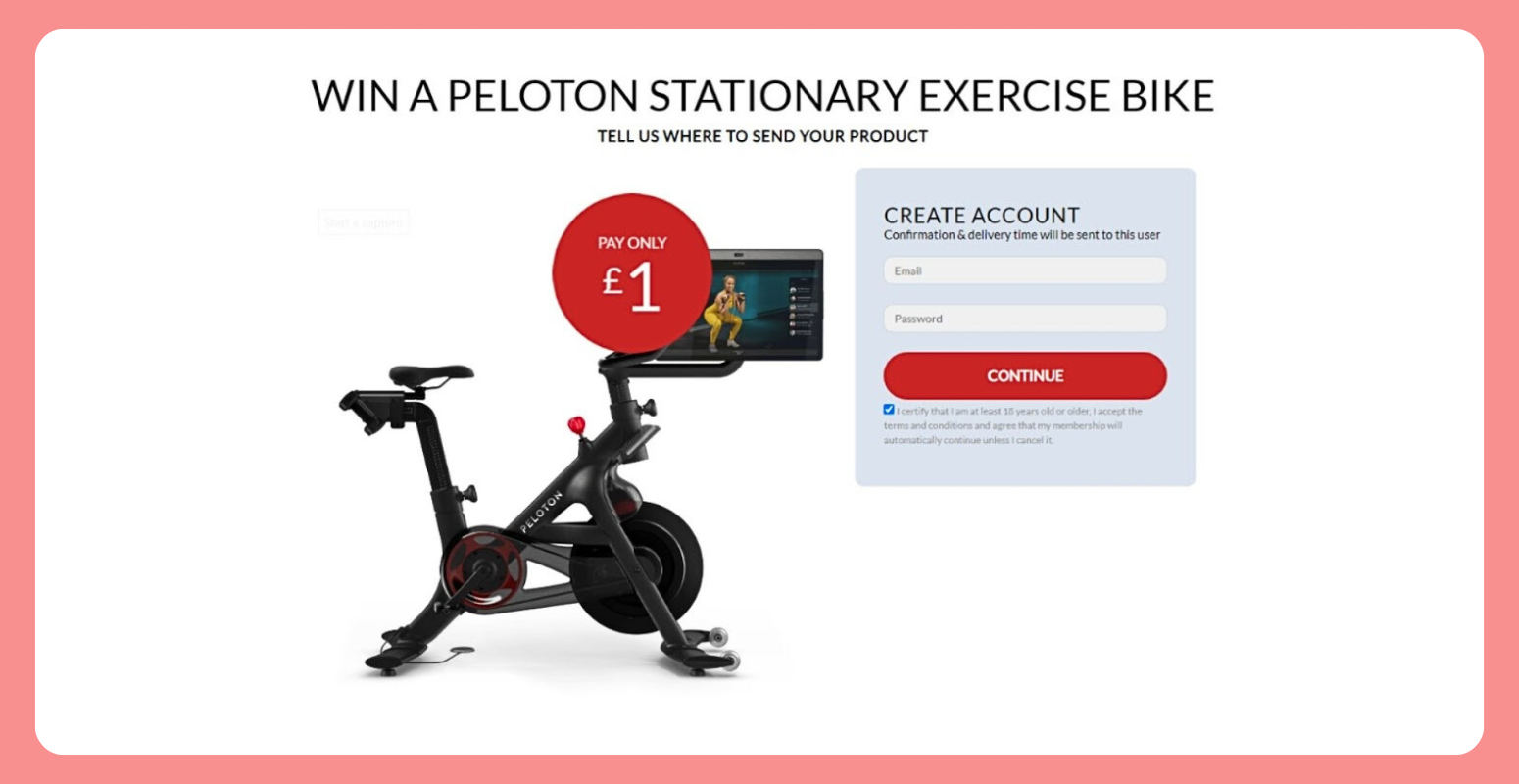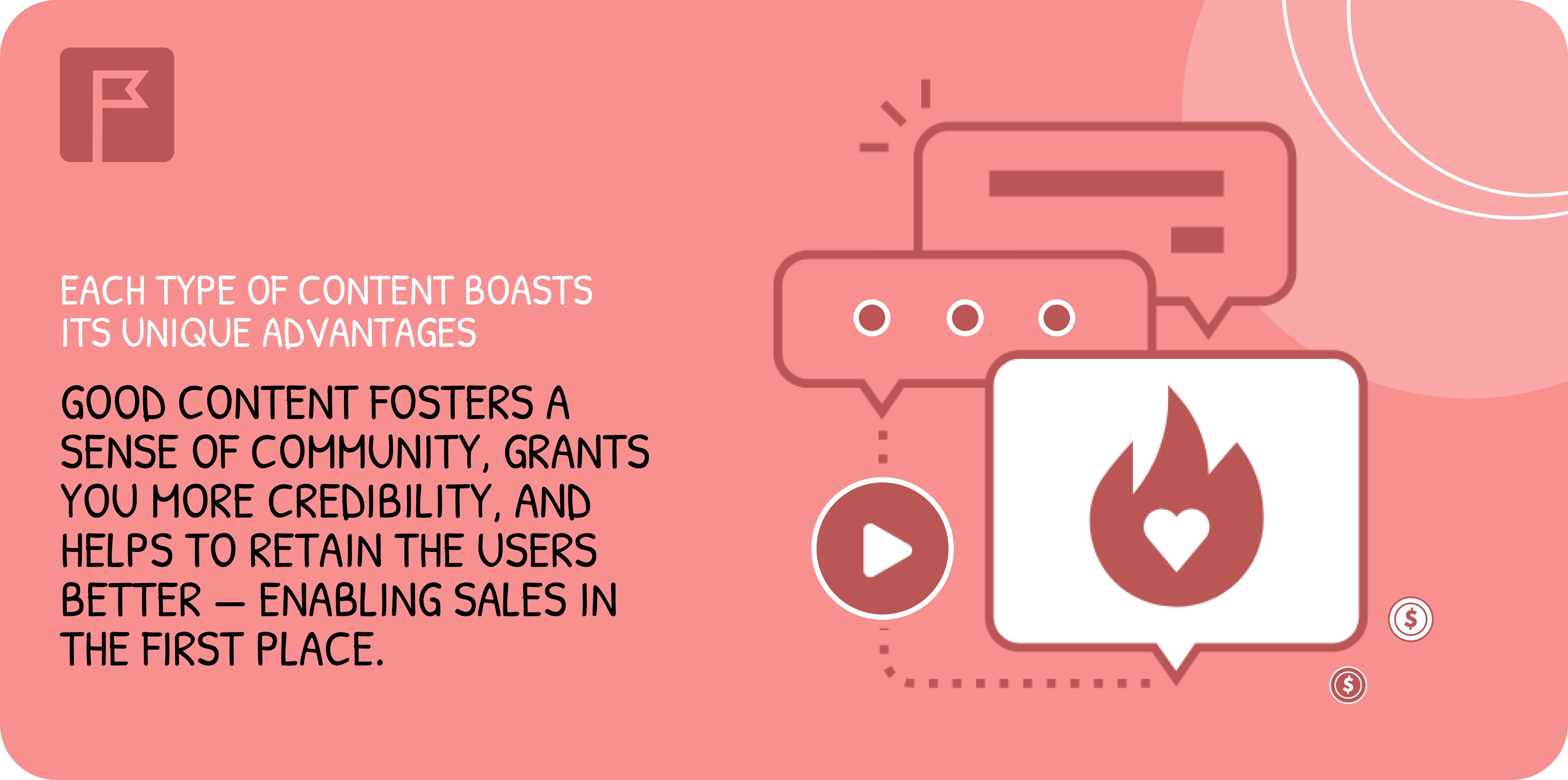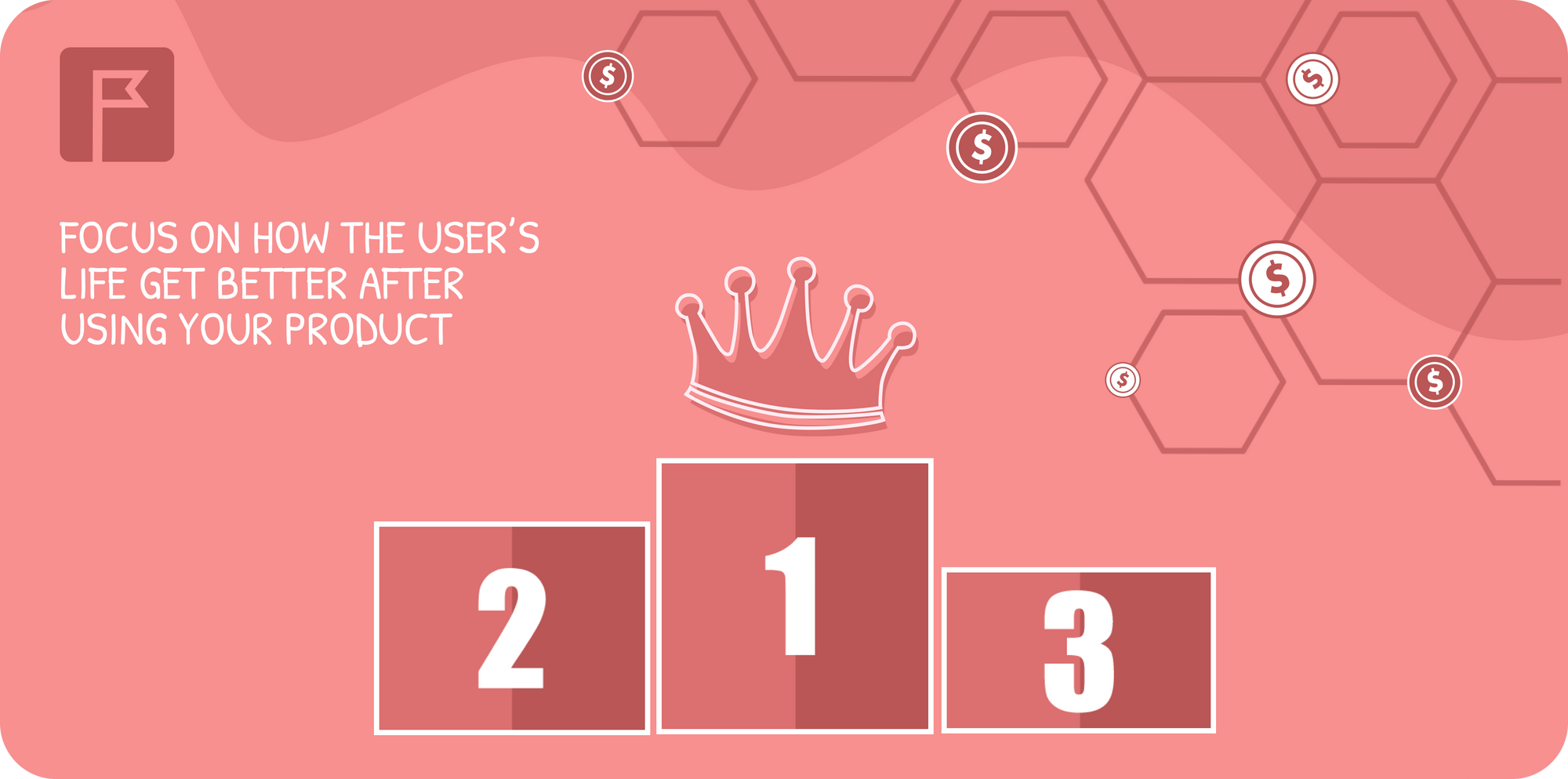Content is the lifeblood of the digital life. Any affiliate marketing activity involves some sort of content — it’s the foundation for SEO, building trust, and retaining users.
Whether you’re an affiliate, content maker, or product owner, this article should help you streamline your content creation and make it more aligned with the affiliate marketing goals. Making great content involves more than just excellent writing and perfect timing, it’s also about consistency and proper planning.
AM Content Strategy Explained
Affiliate marketing is about earning a commission for promoting goods or services. It involves three parties: product owners, affiliates, and publishers. And in-between, there are advertising and affiliate networks, respectively.

Promotion is grounded in marketing funnels, marked by their various levels of complexity. For example, sweepstakes are relatively easy to promote, because of their simple conversion (SOI, DOI, or CC Submit), pre-engaged users, and low financial commitment requirements. However, the simpler the target action, the greater the danger of being scammed.
With HilltopAds, however, you have nothing to worry about, as our in-house anti-fraud solutions maximize your approval rate and payouts as a result. Register now and get high-quality traffic for your needs.
At the same time, the aforementioned sweepstakes might be a part of a greater funnel, where the users are followed up with other offers. For instance, SOI and DOI sweepstakes can be used to collect info about the users. Then, one can follow them up with some nutra pills or traveling offers, creating a meta-campaign involving multiple offers; or even a single one divided into stages.
Alternatively, you might create a whole affiliate blog dedicated to a specific niche or a sub-niche (more on that later). Your ultimate goal here is to maximize the so-called topical authority. It is akin to a brick wall, where the bricks are your pieces of content. Ideally, every blog post relates to another one: from the foundational reviews to some higher-tier compilations.
Let’s say you spend more time initially on writing 10 reviews of sunscreens (nutra); when it comes to making comparisons, you just borrow the information from there with little-to-no adjustments. Besides simplifying writing, you also get an added bonus of convenient navigation.
When making such complex funnels, you need a content strategy to engage the users better, minimize your financial losses, and maximize the impact of every affiliate-related piece of content. Here are some quick facts about content marketing strategies:
- 29% of marketers actively use content marketing, with 50% planning to increase investment.
- Generating traffic and leads remains a challenge for 15% of marketers.
- Short-form videos and voice search optimization are emerging trends.
- Building an active online community is crucial for 90% of social media marketers.
A Word About Content

Content is at the foundation of any significant media presence. Without it, there is no way for SEO, influence marketing, copywriting, etc. Good content fosters a sense of community, grants you more credibility, and helps to retain the users better — enabling sales in the first place.
However, content can be different. Each type of content boasts its unique advantages. Some types intersect, e.g., blog posts and SEO-optimized content.
- Blog posts: Informative or entertaining articles on relevant topics drive engagement and trust, embedding affiliate links seamlessly.
- Product reviews: Honest evaluations establish credibility, guiding consumers towards informed purchasing decisions with embedded affiliate links. Make sure to include high-quality images and/or videos.
- Videos: Utilizing platforms like YouTube, videos direct traffic to product pages, engaging audiences and driving conversions.
- Comparison articles/videos: Transparent comparisons build trust, aiding consumers in navigating choices and making informed decisions. Structure everything using charts, graphs, and tables to ease one’s understanding.
- Tutorials and how-to guides: Practical insights and step-by-step instructions demonstrate product usage, integrating affiliate links for enhanced conversions. The primary goal here is to keep the instructions simple and easy to follow.
- Listicles: Curated lists cater to varied preferences, offering easy-to-digest content with strategically placed affiliate links.
- Case studies: Real-world examples showcase product benefits, providing tangible evidence to build trust and credibility.
- Email campaigns: Targeted campaigns leverage existing interest to promote products, driving conversions via follow-up emails. Complement such content with sneak peeks and/or exclusive offers to make the users feel special.
- Infographics: Visually appealing graphics convey product details effectively, guiding audiences toward conversion with embedded affiliate links.
- Social media posts: Platforms like Facebook and Instagram engage audiences with product highlights, fostering authenticity and relationships.
- Webinars: Interactive sessions educate audiences while promoting relevant affiliate offerings, driving traffic and conversions.
- Podcasts: Audio content integrates product mentions naturally, establishing authority and rapport with listeners.
- Interviews: Engaging conversations with experts or users enhance credibility and generate interest, driving clicks and conversions.
- E-books: Comprehensive guides demonstrate expertise and build trust, incorporating affiliate links for revenue generation.
- Influencer collaborations: Partnering with influencers expands reach and engagement, tapping into established audiences for increased conversions.
- Landing pages: Optimized for conversions, landing pages provide detailed product information to convert visitors into leads.
- Paid advertising: Targeted ads drive traffic to affiliate product pages, boosting visibility and conversions through platforms like Google Ads and social media.
- SEO-optimized content & guest posts: Content optimized for search engines attract organic traffic, while guest posts increase exposure and visibility within the niche.
Remember, you’re not limited to just one content type: a good content strategy is all about synergy between the channels. That’s only one requirement, but there are more…
If you want to speed up your progress as an affiliate, make sure to sign up for HilltopAds: high-quality sources, reasonable rates, and ad format diversity are only a few advantages.
Tell the Story Right
For the funnel to appeal to users more, you ought to know how to tell a captivating story. And while all the funnels are unique, there are some fundamentals of story-telling.
- Define your hero: Your audience is the hero of the story, not you. Understand their needs, desires, fears, and frustrations to create a profile of your ideal hero. A good place to start is the Country Comparison Tool, where you can learn the cultural and behavioral nuances of a certain country.
- Introduce the call to adventure: Present the event or opportunity that sparks your hero’s interest and curiosity, highlighting the gap between their current reality and desired outcome.
- Present the mentor and the plan: Position yourself as the mentor, offering guidance and support, and outline the roadmap (plan) for achieving the hero’s goal. Show your credibility, expertise, and empathy.
- Show the trials and the results: Illustrate the obstacles (trials) your hero must overcome and the benefits (results) they can expect from following your plan. Use evidence, examples, and stories as social proof, swaying the hesitant users in your favor.
- Lead to the climax and the resolution: Create a peak moment where your hero must make a decision or take action (climax), followed by the final outcome where they achieve their goal (resolution). Use urgency, emotion, and contrast to motivate action.
- Wrap up with a takeaway and a hook: Summarize the main message or lesson (takeaway) you want your hero to remember and provide an element (hook) that keeps them engaged and interested in learning more.
- Consider additional elements: Share examples, stories, or insights that enhance the presentation, and ensure clarity and relevance throughout the funnel.
Remember that every aforementioned element can be subject to A/B testing, meaning you have plenty of room for finessing and perfecting. Ideally, your funnels should contain all the stages, as skipping even a single stage decreases the chances of users relating to your content.
Picking the Right Social Media Channel
Even when making ads, you need to decide which platforms suit you more. In case of ad networks, you need to figure out which ad zones and feeds work better for you — another thing to test. Find below a concise summary of which social media platforms are better suited for which audience.
1. Facebook:
- Most used platform overall.
- Largest age group: 25–34.
- Balanced gender distribution.
- Suitable for a wide range of demographics, but younger users tend to prefer other platforms like TikTok and Snapchat.
2. Instagram:
- Strongest among Gen Z and millennials.
- Largest age group: 18–24.
- Slight majority of female users.
- Growing steadily with increased engagement.
3. TikTok:
- Rapidly growing, especially among Gen Z.
- Largest age group: 18–24.
- Almost equal gender distribution.
- Highest daily time spent per user compared to other platforms.
4. X (formerly Twitter):
- Experienced a decline in users after rebranding.
- Still popular, especially among ages 25–34.
- Skewed towards male users.
- Users spend more time compared to Facebook and Instagram.
5. YouTube:
- Popular among Gen Z.
- Largest age group: 25–34.
- Slight majority of male users.
- Growing adoption of video content.
6. LinkedIn:
- Initially seen as for older audiences, but dominated by millennials.
- Growing among Gen Z as they enter the workforce.
- High daily usage, ideal for B2B content marketing.
7. Pinterest:
- Majority female user base.
- Largest age group: 25–34.
- Promotes discovery, with users often finding new brands and products.
8. Snapchat:
- Strongest with the younger crowd.
- Largest age group: 18–24.
- Balanced gender distribution.
- Continues steady growth, especially among Gen Z.
Each platform caters to different demographics and has unique strengths. But picking a platform is not enough, you need to figure out the most optimal content type.
Figuring Out Their Content Preferences
Here are the key points about the preferred content for various audience segments.
1. Funny Content:
- 49% of consumers find funny content the most interesting and memorable.
- Marketers are increasingly leveraging funny content on social media, with plans to invest more in it.
- Examples include witty emails, humorous social media posts, and funny videos.
2. Relatable Content:
- 36% of consumers prefer relatable content, which they find authentic (remember storytelling earlier?).
- Authenticity and relatability are more important than high-quality production.
- Marketers can create content that reflects consumers’ lives, experiences, and needs.
3. Content Reflecting Brand Values:
- Consumers find content that reflects brand values memorable and interesting.
- Brands need to showcase their values, especially on social media, to build connections with consumers.
- Social advocacy, particularly around issues like racial justice, climate change, and LGBTQ+ rights, resonates with consumers.
4. Preferred Content for Learning about Products and Services:
- Consumers prefer learning about products and features through the internet, retail stores, and word-of-mouth.
- Gen Z prefers learning through social media, especially short-form videos and influencer content.
- Marketers should focus on creating SEO-friendly content, using high-quality visuals for in-store advertising, and leveraging customer reviews.
5. Generational Differences:
- Preferences for learning about products vary across generations.
- Gen Z and Millennials prefer short-form video and influencer content.
- Gen Xers and Baby Boomers prefer feed posts, online communities, and traditional ads.
Marketers should align their content strategies with these preferences, focusing on authenticity, relatability, and aligning with brand values to connect with consumers effectively.
Value as the Core of Your Strategy
No matter which content tactic you mix into your strategy, one thing remains constant — problem-solution prevails. Instead of bragging about the features, make sure to focus on how the user’s life get better after using your product.
- Pick a niche, preferably with a sub-niche with a milder competition.
- Identify the target audience(s) and tailor content to each persona.
- Address the problem(s) your product or service solves for the audience.
- Highlight what makes your brand unique to stand out from competitors.
- Choose content formats based on audience preferences and allocate resources accordingly.
- Select publishing channels that align with audience habits and preferences.
- Establish a process for content creation, publication, and management, considering team collaboration as the company grows.

A Process for Content Creation
Let’s say you have a blog, dedicated to a specific niche, e.g., traveling. You want to attract traffic of quality, marked by its affordability and user engagement. This includes direct, organic, and redirect traffic.
To start attracting traffic of quality, you need to build your topical authority. Considering the competition, the chances are slim to earn credibility fast in such a vast vertical as traveling. You need to focus on a sub-niche, e.g., winter tourism or travel tickets.
This is where you start generating a cluster of topics, which start to synergize over time and contribute to your organic search, thanks to well-structured internal linking. You can go through the most popular locations to visit during cold seasons, which will serve as your first layer. Then you can compare all the locations head-on — your second layer of content. You can also go for compilations or even arrange subsequent voting for the best vacation spots — a great way to engage your users.
Make sure to do your keyword research and categorize them into different types, such as general comparisons, branded comparisons, product reviews, and trust and authority (T&A) topics.
When it comes to informational posts, they tend to be less structured by design. A blog post about when it is the best time for winter vacations might or might not relate to Norway, cheap tickets in winter, Holiday & New Year, etc.
The informational posts tend to deliver more backlinks, which is beneficial for your SEO and overall authority. Even if you’re not interested in organic traffic, having an established userbase is just cheaper in the long run. That’s why the fans of paid advertising might consider investing a bit in developing their own blog and social media presence.
Conclusion
A successful affiliate marketing content strategy hinges on understanding audience preferences, crafting diverse content types, and delivering value through compelling storytelling. By focusing on building topical authority, tailoring content to platform demographics, and adhering to a structured content creation process, marketers can effectively engage audiences, drive conversions, and achieve long-term success in the digital landscape.
Blog is just one example, even paid advertising delivers better results when you have a plan. That’s why we always recommend consulting your account manager (AM) or our support team for more insights and better planning. Remember, HilltopAds specialists are always by your side, because we’re in this business together.


















